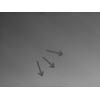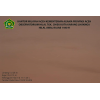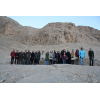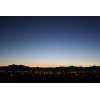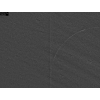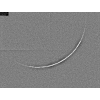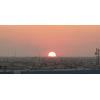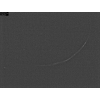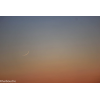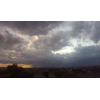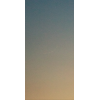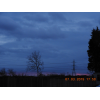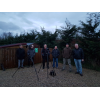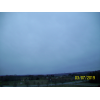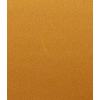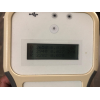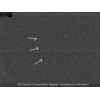Visibility of Rajab Crescent 1440 AH
- When to Observe Rajab Waxing (NEW) Crescent ?
- Rajab Waxing (NEW) Crescent Observation Results
- The OFFICIAL First Day in Different Countries
- When to Observe Jumadal Al-Aakherah Waning (OLD) Crescent ?
- Jumadal Al-Aakherah Waning (OLD) Crescent Observation Results
When to Observe Rajab Waxing (NEW) Crescent ?
The geocentric conjunction (Geocentric New Moon) will occur Inshalla on (Wedensday 06 March 2019) at 16:04 UT.
Sighting the new crescent on (Wedensday 06 March 2019) and (Thursday 7 March 2019) is shown in the below graphs using the program Accurate Times by Mohammad Odeh according to Odeh criterion. Where:-
- It is impossible to see the crescent from the areas located under the red color. Because either the Moon on this day sets before the Sunset and/or the topocentric conjunction occurs after the Sunset.
- The crescent is expected to be seen by optical aid only from the areas located under the blue color.
- The crescent is expected to be seen by optical aid from the areas located under the magenta color. In these areas the crescent could be seen by naked eye if the atmospheric conditions are superb and the observer is experienced.
- The crescent is expected to be easily visible by naked eye from the areas located under the green color.
- The crescent cannot be seen from uncolored areas, even though the Moon sets in these locations after the Sunset and the topocentric conjunction occurs before the Sunset, but the Moon is not sufficiently illuminated in order to be seen as crescent even by optical aid.
- Kindly notice that the below graph shows the possibility of seeing the crescent from areas between 60 degrees north of Equator down to 60 degrees south of Equator.

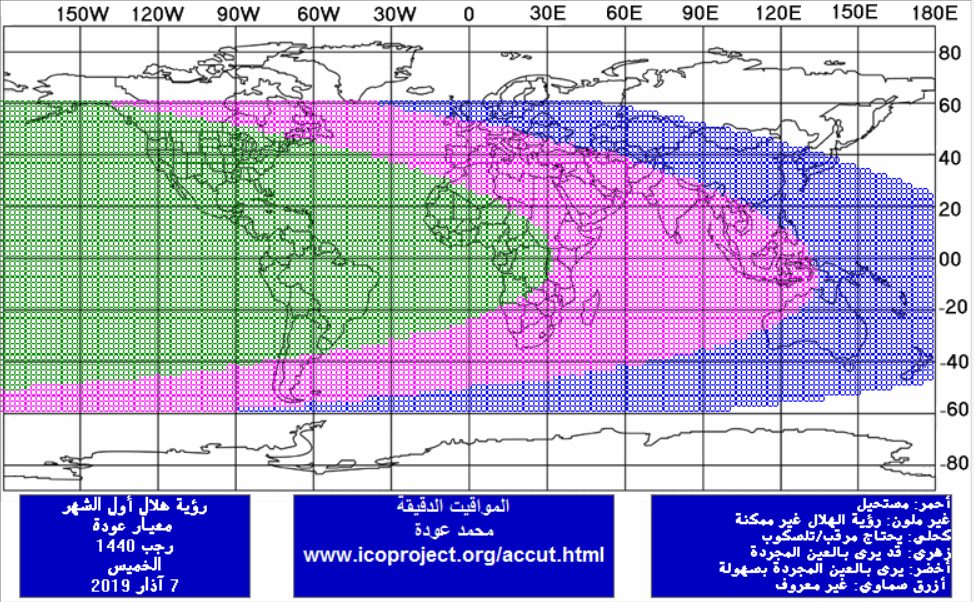
According to the Universal Hejric Calendar (UHC), which is based on the calculated crescent visibility, the start of this month in the Eastern Region will be on Friday 08 March 2019 and in the Western Region will be on Friday 08 March 2019. Kindly notice that the UHC is a pre-calculated calendar, which adopts a certain criterion to start the new Hejric month. Your country/organization might adopt different criterion to start the new Hejric month. So it is highly advised to read the UHC website before giving any judgment.
- Results of seeing the crescent, and the first day of the month in different countries will be added here Inshalla as we receive the reports from ICOP's members. If you wish to be a member in ICOP, or to know more about it, kindly click here.
Rajab Waxing (NEW) Crescent Observation Results
Thu 07 March 2019
Australia
Bahrain
Indonesia
Mr. AR Sugeng Riyadi said: "The new crescent of Rajab 1440 AH was not seen from Assalaam Observatory at PPMI Assalaam Pabelan Kartasura Sukoharjo Central Java Indonesia on Thursday, March 07, 2019. The sky was totally cloudy. The new crescent was sighted from Tkg. Chiek Kuta Karang Observatory at Aceh by Team of Kemenag Aceh. The 1st Rajab 1440 AH in Indonesia will start on Friday, 08 March 2019."
Iran
Mr. Hossein Janghorbani said: "In the name of God Happy new Years (1398 - In accordance with Iran's official calendar) Rajab Crescent Observation Report The Astronomy and Geophysics Center of Shahreza – The Crescent Association of Shahreza Report by: Hossein Janghorbani (NajmoSepehr-Sadrolmonajjemin) – Manager of Shahreza Crescent Association and Red Crescent’s Astronomy and Geophysics Center Date: Thursday, 03/07/2019 Location: Damzad foothills in the East of Shahreza (latitude: 32 00 N, longitude: 51 52 E, elevation: 1825m from sea level, time zone: +3.5 GMT) Equipments: Two set of 15*70 binoculars, One set of 20*90 binoculars, One compass. Atmospheric condition: Hazy Horizon obstacles: about 1.5° Apparent Sunset: 17:56 Apparent Moonset: 18:36 Results: Moon crescent was seen by 15*70 binoculars by Hossein Janghorbani at 18:23, for the first time. Other group members observed crescent by binoculars subsequently. Observers: 1.Abdolreza Gholami 2.EhsanAli Alinezhad 3.MohammadJavad Nikeghbal 4.MohammadSadra Nikeghbal 5.AmirMohammad Barahimi 6.AmirHossein Yasrebi 7.Reza Janghorbani 8.Ali Janghorbani 9.Hossein Janghorbani 10.Shahnaz Soroori 11.Farzaneh Momeni 12.Monireh Momeni 13.Maryam Same 14.Masoomeh Hafar 15.Ziba Hafar 16.Roya Ghermezi 17.Zinat Ghermezi 18.Zahra Barahimi 19.Misagh Alinezhad 20.Zahra Fallahi "
Iraq
Mr. Hashim Almoosawi said: "رصد هلال رجب سنة 1440 بواسطة مرصد البصرة الفلكي https://www.facebook.com/BasraAstronomicalObservatory #Basra_Astronomical_Observatory تم رصد الهلال بدءاً من الساعة 10:00 صباحا و بسبب الاجواء الصافية تمكنا من رصده لغاية الساعة 6:29 مساء اي قبل غروبه ب 5 دقائق تلسكوب نوع: ED127 كامرا: Lumenera LT365R فلتر: 685" كما تمت رؤيته بالعين المجردة بسهولة من قبل بعض المتمرسين برؤية الهلال"
Morocco
Mr. Abdessamad Doukkane said: "بسبب سوء الاحوال الجوية لم تتمكن المناطق الشمالية للمغرب من رؤية الهلال : طنجة- الناظور- وجدة -تاوريرت، وقد ثبتت رؤيته بعدة مدن توصلت الجمعية بصورها : الداخلة -العيون -اكادير. الصورة من مدينة أكادير ، ارسلها المؤقت عبد العزيز خربوش."
Nepal
Qatar
Eng. Sultan Alkhulaifi said: "Measurement before sunset Total AOD Blue = 0.031 Total AOD Green = 0.040 Total AOD Red = 0.035"
Saudi Arabia
United Kingdom
Eng. Qamar Uddin said: "There were 7 of us from York Astronomical Society looking for the moon of Rajab 1440, but it was totally cloudy in York. There was a small break in the cloud after sunset on the Western horizon where we saw the orange glare of the sun but it was soon covered by cloud. Most of the UK is also cloudy today so we hope to hear from nearby countries with positive sighting results within the next few hours, inshaAllah."
United States
Dr. Javad Torabinejad said: "I arrived at my sighting location prior to sunset (sunset 6:22 pm EST). The sky was totally cloudy. Since I did not expect any changes in the sky condition, I left the place at 6:24 pm (moonset: 7:23 pm)"
The OFFICIAL First Day in Different Countries
Fri 08 March 2019
1 . Bahrain
2 . Indonesia
3 . Iran
4 . Morocco
5 . Saudi Arabia
6 . United Kingdom
Sat 09 March 2019
1 . Australia
2 . Nepal
When to Observe Jumadal Al-Aakherah Waning (OLD) Crescent ?
The geocentric conjunction (Geocentric New Moon) will occur Inshalla on (Wedensday 06 March 2019) at 16:04 UT.
Sighting the OLD crescent on (Wedensday 06 March 2019) and (Tuesday 5 March 2019) is shown in the below graphs using the program Accurate Times by Mohammad Odeh according to Odeh criterion. Where:-
- It is impossible to see the OLD crescent from the areas located under the red color. Because either the Moon on this day rises after the Sunrise and/or the topocentric conjunction occurs before the Sunrise.
- The crescent is expected to be seen by optical aid only from the areas located under the blue color.
- The crescent is expected to be seen by optical aid from the areas located under the magenta color. In these areas the crescent could be seen by naked eye if the atmospheric conditions are superb and the observer is experienced.
- The crescent is expected to be easily visible by naked eye from the areas located under the green color.
- The crescent cannot be seen from uncolored areas, even though the Moon rises in these locations before the Sunrise and the topocentric conjunction occurs after the Sunrise, but the Moon is not sufficiently illuminated in order to be seen as crescent even by optical aid.
- Kindly notice that the below graph shows the possibility of seeing the crescent from areas between 60 degrees north of Equator down to 60 degrees south of Equator.
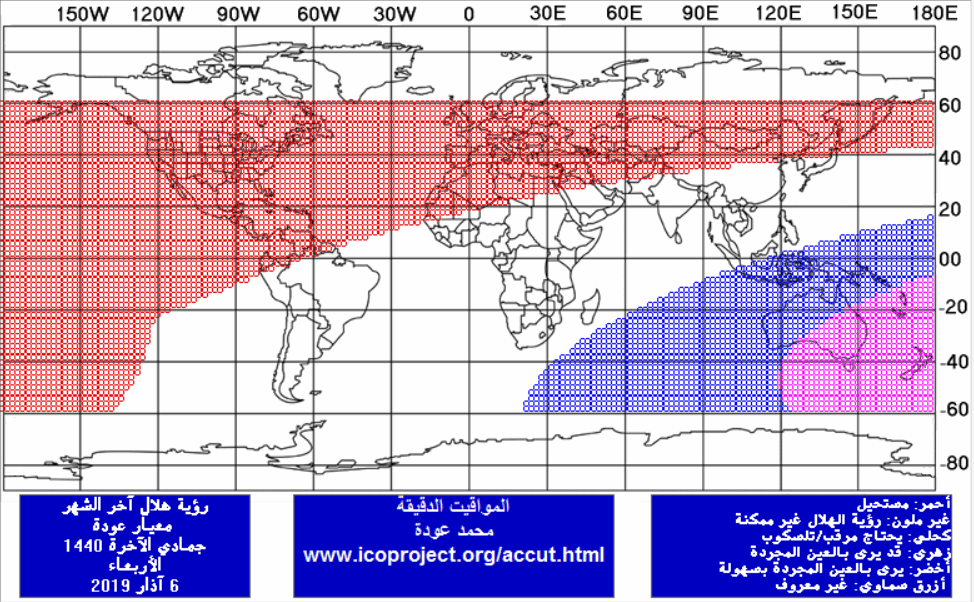
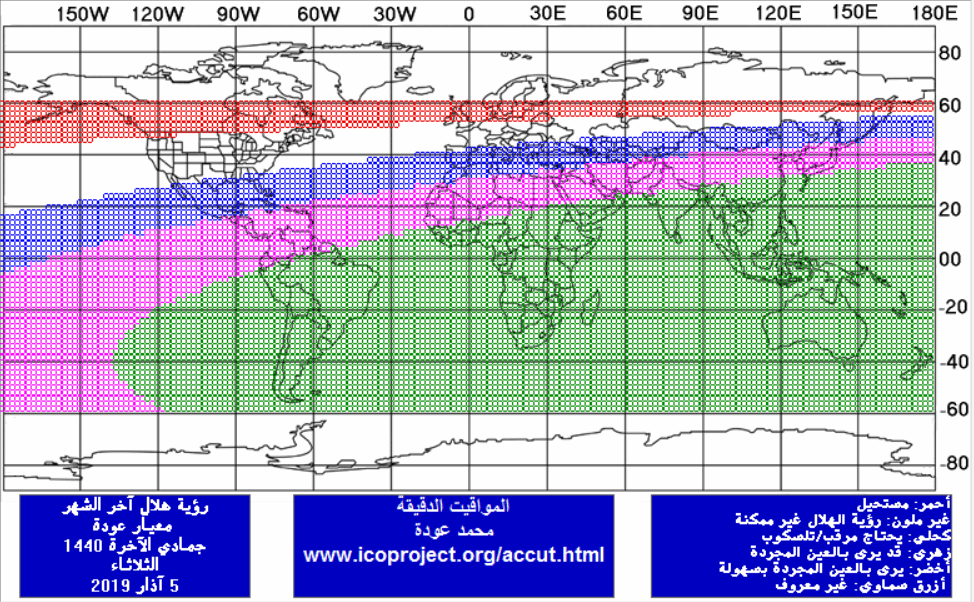
Jumadal Al-Aakherah Waning (OLD) Crescent Observation Results
Tue 05 March 2019
Indonesia
Qatar
Eng. Sultan Alkhulaifi said: "تم التحري بكاميرا زووم 200مم من دون حامل"
United States
Mr. Jim Stamm said: " Old Moon Crescent Observation Report ====================================== Observed: Tuesday; March 05, 2019 - 07:12 (Local) Location (WGS 84) = Oro Valley, Arizona (USA) Longitude = 110.9652 W Latitude = 32.4205 N Elevation = 838 meters Time Zone = -7.0 hours Surface conditions at location: Temperature = 5°C Rel. Humidity = 34% Bar. Pressure = 30.00 in. Banded clouds in the east. Topocentric and local time values from “Accurate Times”: Moonrise/Sunset (at sea level) = 06:25 Sunrise/Moonset (at sea level) = 06:42 Time from new moon at 07:12 = 24 hr. 52 min. Moon lag time = 17 min. Relative Altitude = 3.6 degrees Elongation from sun = 12.1 degrees Crescent width = 20 arc seconds Illumination = 1.1 percent I was NOT able to see the crescent, even through a telescope. I had seen crescents before with less than 12 degrees elongation after sunrise, so I had hopes of seeing this one with 17 minutes lag time. There was too much junk in the sky even between the bands. Observer: Jim Stamm E-mail Address: StammJim@gmail.com"
Wed 06 March 2019
Saudi Arabia
Mr. Turki Alamri said: "I start my imaging session with the finest weather ever AOD was 0.02 for 619 nm i manage to image the crescent with T elongation +5:35 i took some images and suddenly the weather changed and clouds invaded my location so i stopped my equipment's. i was imaging from my observatory https://www.alamriobs.com/?lang=en "

